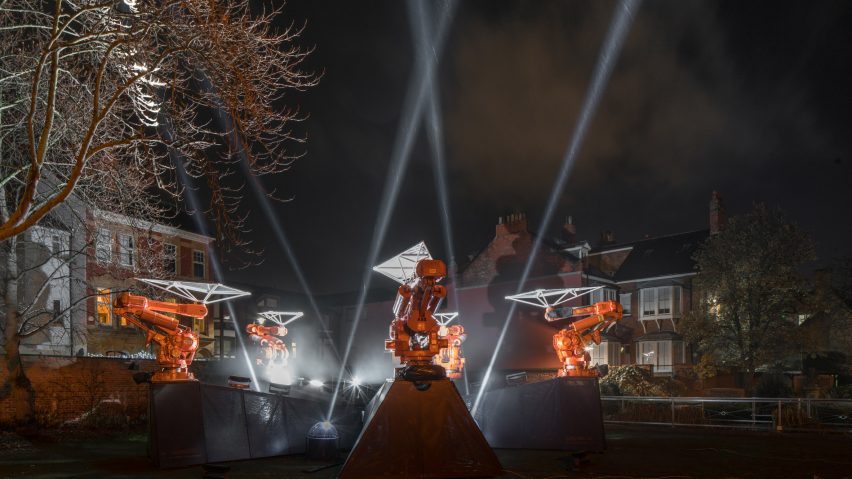
Jason Bruges Studio installs "cast" of 20 robots across Hull for UK City of Culture celebrations
Jason Bruges Studio has created four site-specific installations for different locations across Hull's Old Town, which each see robotic arms move and interact with their surroundings.
The London-based studio was brought on board to create the Where Do We Go From Here? installation for the Hull, Yorkshire, as its year-long reign as the UK's City of Culture 2017 comes to a close.
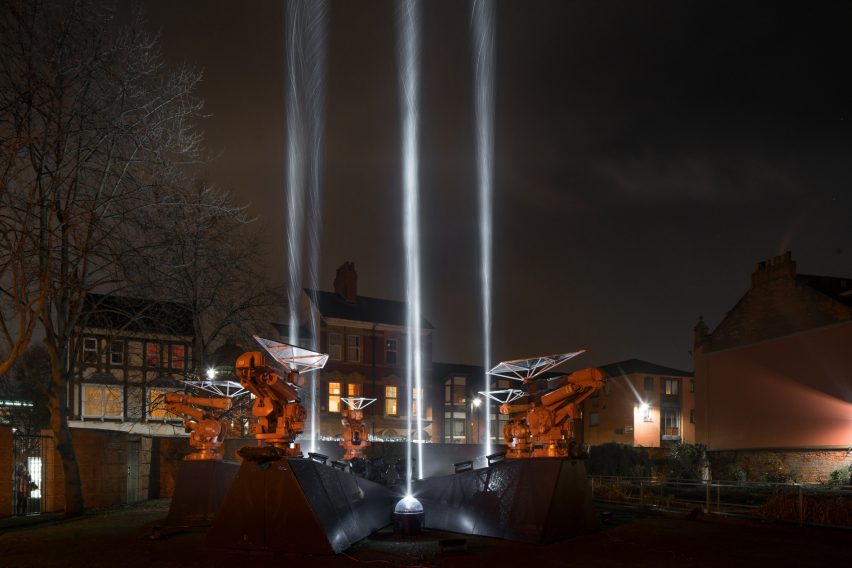
The team, headed by founder Jason Bruges, is known for its kinetic, technology-driven interventions. The aim was to create an installation that encourages Hull's community to interact with robotics.
Described by Bruges as a "cast" of robots, Where Do We Go From Here spans four different locations in the city's Old Town: Beverley Gate, Trinity Square, Streetlife Museum and Wilberforce House.
The Old Town, made up of maze-like cobbled streets, features some of Hull's most historic buildings, including a parlour inside a pub where the English Civil War was allegedly plotted.
Depending on the location, the six-metre-tall robots have been programmed to behave in a different way. Together, Bruges hopes the installations will act as "beacons" across the city, guiding visitors between locations.
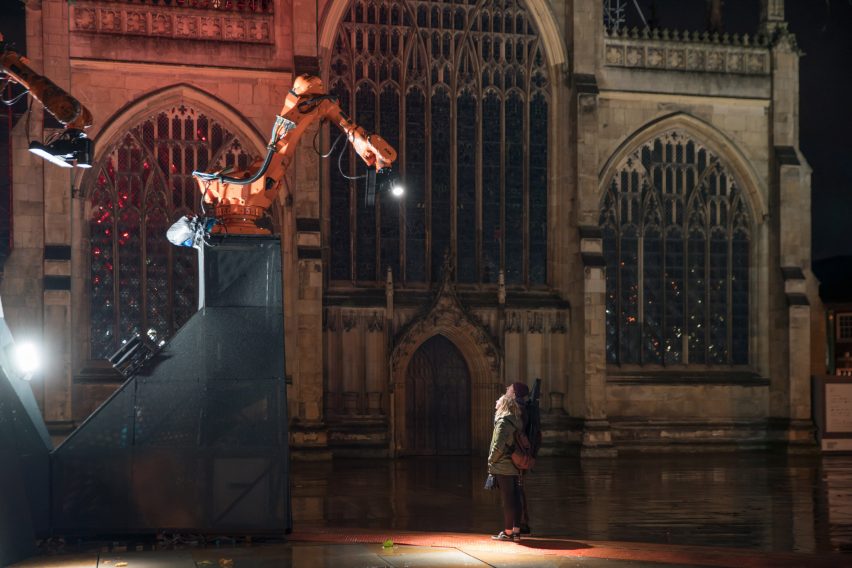
"The idea developed from Hull's history with developing maritime navigation systems," Bruges told Dezeen. "It's like an outdoor art gallery that you walk through, in your own time."
"Visitors may never have seen a robot in operation in real life, and they have a scale and a presence," he continued.
At Beverley Gate, the historic entrance to the Old Town, six "gatekeeper" robots cast light signals across the nearby waters of Princes Quay.
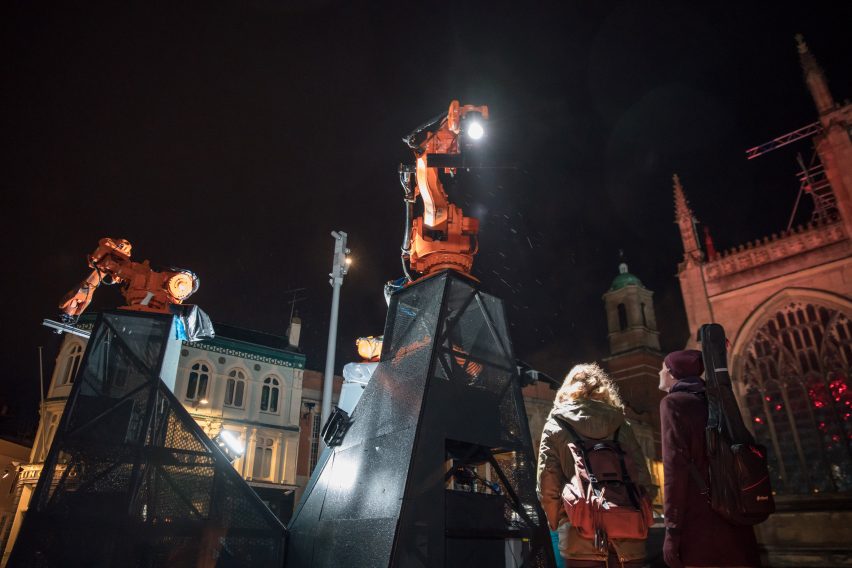
Trinity Square has been kitted-out with nine robots that are choreographed to perform an audio-visual show, and visitors are encouraged to walk between each of the plinths to interact with the installation.
For the gardens behind the Streetlife Museum of Transport, five robots have been programmed to carry out a collaborative routine – with huge light beams shining up into the sky.
The final location sits behind the gates to Wilberforce House, the home of British politician William Wilberforce. Here, visitors are unable to get up close to the installation, but are instead greeted by the robot as it peeks through the gate or pops-up over the wall.
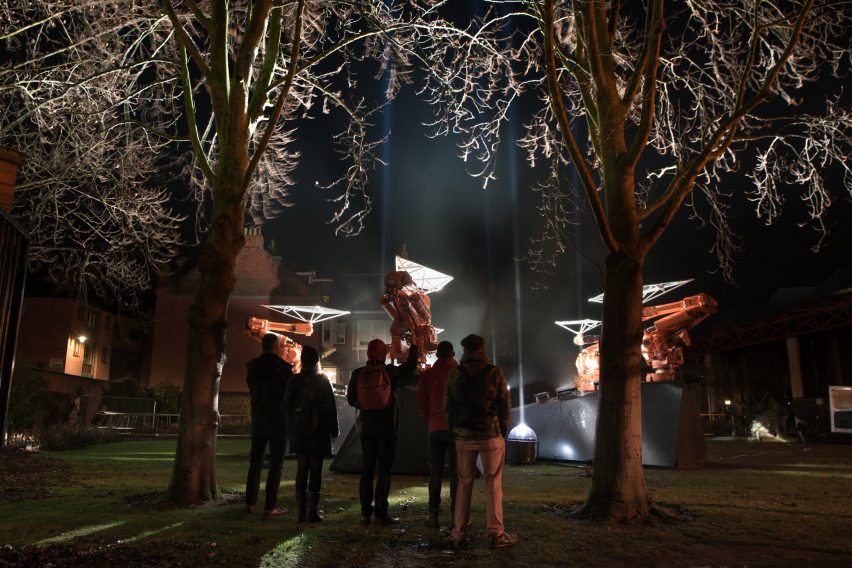
"Digital interventions can invigorate our public spaces and shape how we behave within them," said Bruges. "I wanted this installation to reflect both Hull's past, as well as the transformation it is undergoing to become a leading centre for both culture and, through green energy, technological innovation."
"In a world that is increasingly digital and where the role of robotics is more prominent in our daily lives, I'm interested in exploring the ways in which we can use this technology to enhance our public spaces," he continued.

Bruges founded his eponymous studio in 2002. Since then, his team has also worked on a variety of projects – ranging from an installation featuring light panels that open and close like flowers, to a lighting mobile that moves around to map its surroundings.
The UK launched its City of Culture initiative in 2009, in a bid to build on the success of Liverpool's year as European Capital of Culture in 2008. The first city to take the accolade was Londonderry in 2013.
The next winning city is being decided in December 2017, with Dezeen founder and editor-in-chief Marcus Fairs on the jury – who will decide between Coventry, Paisley, Stoke-on-Trent, Sunderland, and Swansea.
In November, it was announced that the UK had been disqualified from hosting the European Capital of Culture in 2023, as a result of Brexit.